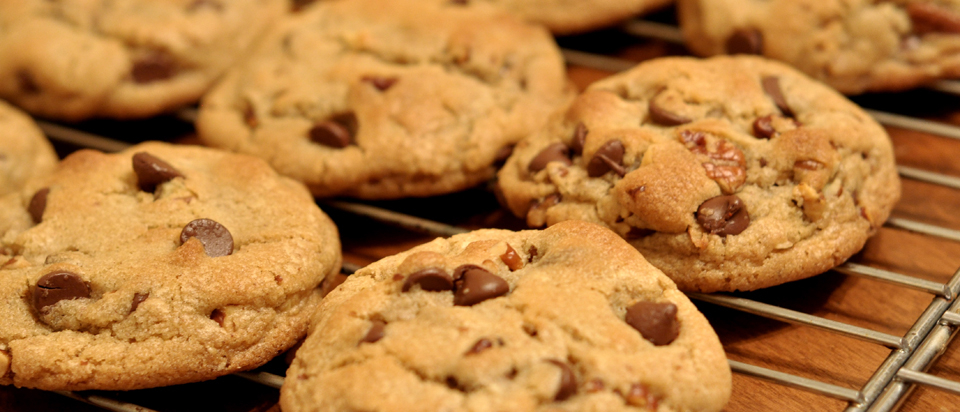"That's the way the cookie crumbles!" How often have you heard that expression? It is usually a statement of disappointment which may be paraphrased as "tough luck." But why does a cookie crumble? There’s interesting science here, but alas, there is no simple chemical explanation for the difference between crumbly and gooey chocolate chip cookies. Let’s give it a shot though..
First a little cookie history. Way back in the 1930s Ruth Wakefield ran a restaurant outside of Boston called the Tool House. She used to serve little delicacies called “Butter Drop-Do's” made of flour, butter, sugar, eggs, salt and baking soda. One day, she had the idea of adding some chocolate flavoring. Why not just chop some chocolate into the batter and have it melt during baking, spreading the flavor through the cookie?
A good idea in theory. Unfortunately, the cookies were fully baked before the chocolate had a chance to melt and spread. She was disappointed when she removed the cookies from the oven. But then she tasted them! They were great! Mrs. Wakefield and her customers loved these new-fangled "chocolate chip" concoctions. In fact, so many people asked for the recipe that sales of chocolate in Massachusetts shot up.
The Nestle company was quick to recognize the windfall and started marketing chocolate bars that were pre-scored for breaking into little chunks. Within a short time they were selling bags of chocolate chips with Mrs. Wakefield's recipe printed on the bag. Today, everyone has their favorite chocolate chip cookie. But if we can generalize a little, most would agree that the perfect cookie has to toe the line between crispiness and chewiness. Unfortunately though, there are numerous factors which affect these characteristics.
First of all, the extent of gluten development in the flour is critical. Gluten is a three dimensional network of protein molecules that forms when dough is kneaded with water. It kind of becomes a supporting molecular scaffold for the other ingredients. If the scaffold is strong, with many connections, the resulting texture is tough. High gluten flour is great for bread where a tough texture is needed but is not appropriate for cakes or cookies.
All purpose flour is better for cookies because it has a lower protein content and therefore less potential for gluten formation. But the extent of gluten development is not solely a function flour protein. The amount of fat, sugar and water in the mix are also important. So is the mixing technique.
Fat tends to interfere with the power and the efficiency of gluten to form a tough mass. It is said to "shorten" the effect of gluten. Fats produce their shortening effect by coating flour particles and physically separating them. The gluten molecules within each particle can form their three dimensional network but they cannot span the gap between flour particles. Even the type of fat used has an effect. Oils lead to a more crumbly texture, lard to a more flaky one.
Sugar also interferes with gluten development and tends to produce more tender and fragile products. The crisp cookie is usually made from a mixture rich in fat and sugar. Mixing the dough with water enhances gluten development as the proteins which make up gluten unravel from their natural coiled form and stick to each other.
As you can see, cookie chemistry is complex. There are many variables in determining the degree of crumbliness. I'm afraid I cannot give you a short simple chemical explanation on this one. But that's the way the cookie crumbles!
-----







